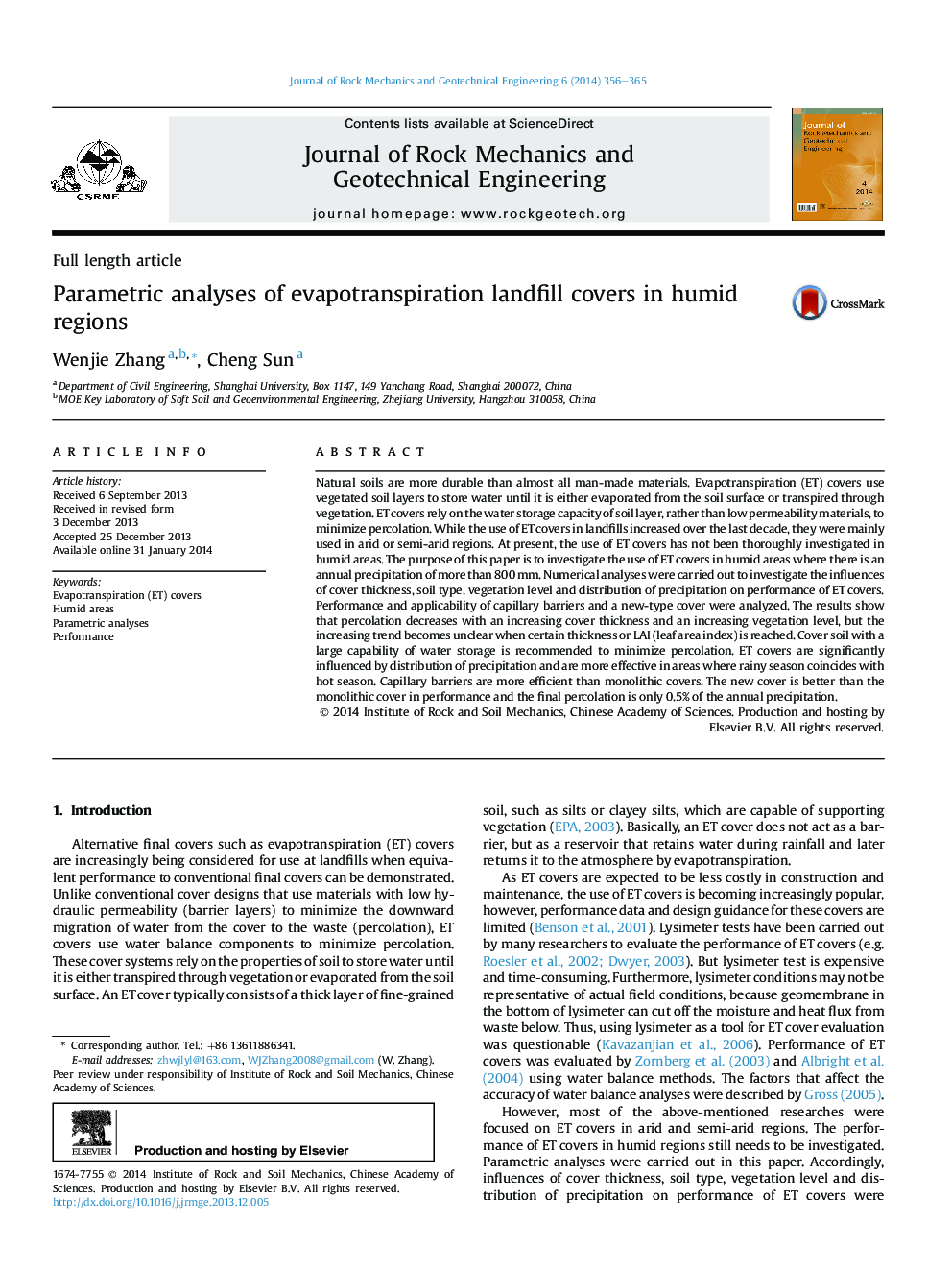| Article ID | Journal | Published Year | Pages | File Type |
|---|---|---|---|---|
| 286756 | Journal of Rock Mechanics and Geotechnical Engineering | 2014 | 10 Pages |
Natural soils are more durable than almost all man-made materials. Evapotranspiration (ET) covers use vegetated soil layers to store water until it is either evaporated from the soil surface or transpired through vegetation. ET covers rely on the water storage capacity of soil layer, rather than low permeability materials, to minimize percolation. While the use of ET covers in landfills increased over the last decade, they were mainly used in arid or semi-arid regions. At present, the use of ET covers has not been thoroughly investigated in humid areas. The purpose of this paper is to investigate the use of ET covers in humid areas where there is an annual precipitation of more than 800 mm. Numerical analyses were carried out to investigate the influences of cover thickness, soil type, vegetation level and distribution of precipitation on performance of ET covers. Performance and applicability of capillary barriers and a new-type cover were analyzed. The results show that percolation decreases with an increasing cover thickness and an increasing vegetation level, but the increasing trend becomes unclear when certain thickness or LAI (leaf area index) is reached. Cover soil with a large capability of water storage is recommended to minimize percolation. ET covers are significantly influenced by distribution of precipitation and are more effective in areas where rainy season coincides with hot season. Capillary barriers are more efficient than monolithic covers. The new cover is better than the monolithic cover in performance and the final percolation is only 0.5% of the annual precipitation.
